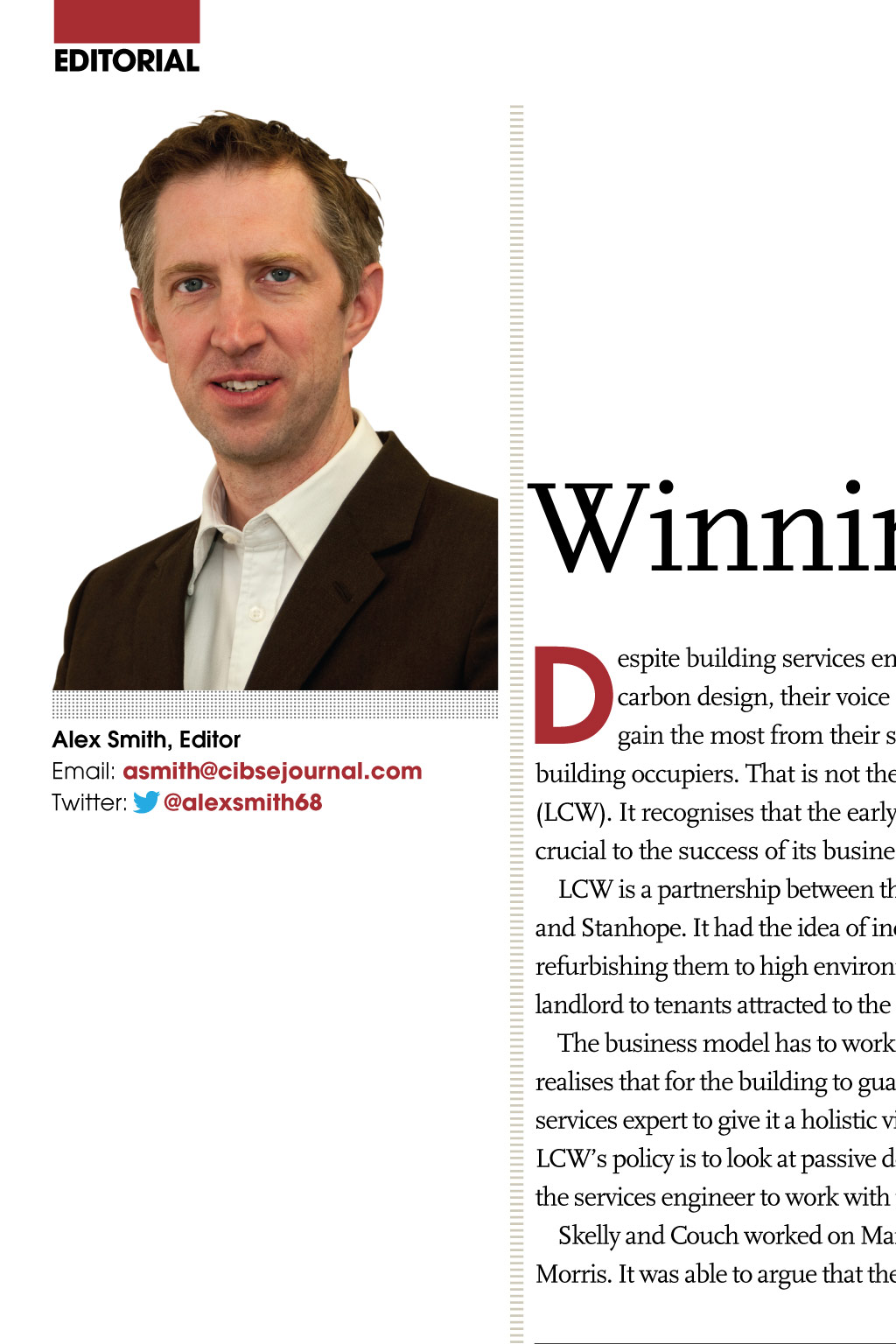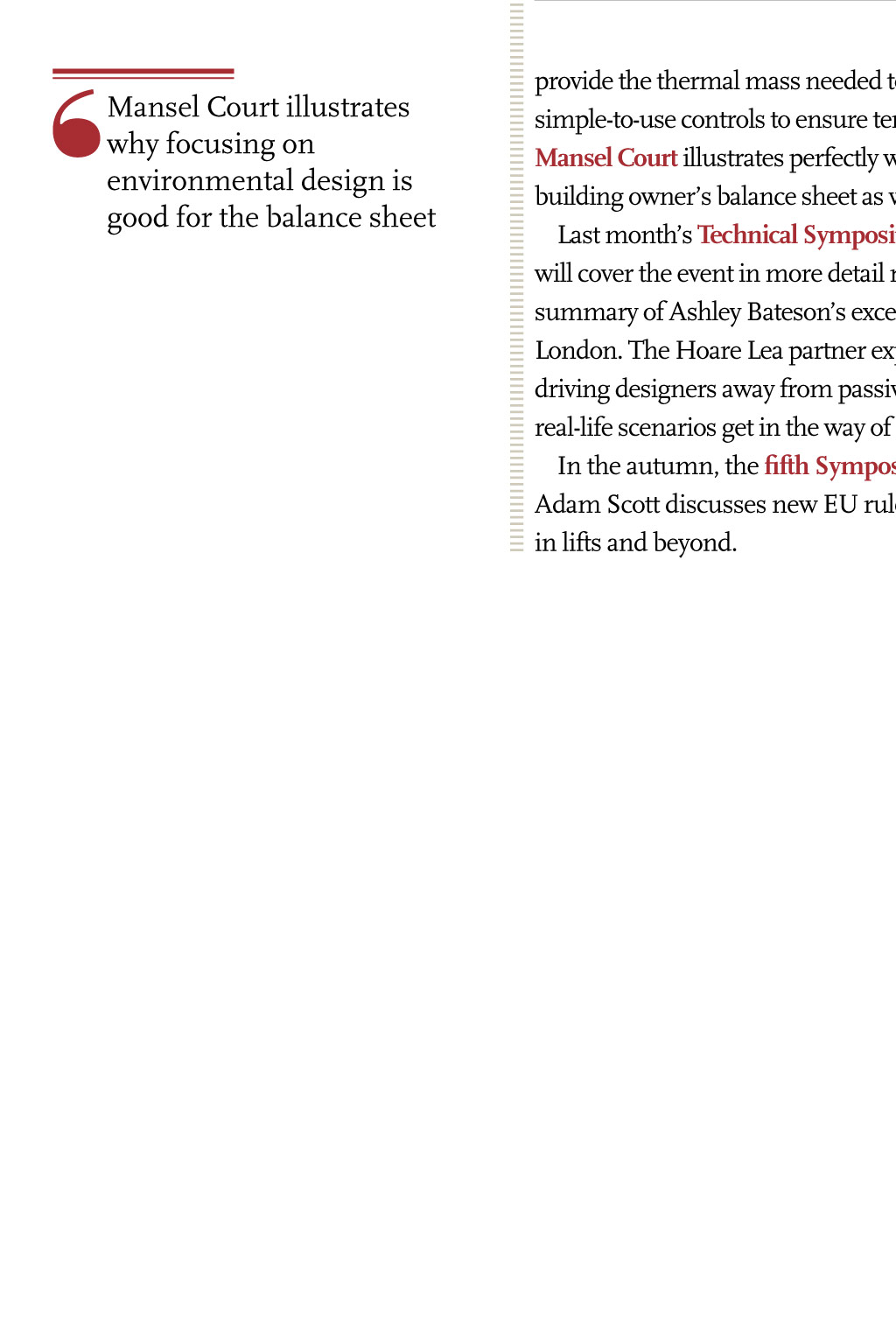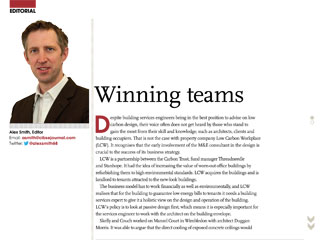








editorial Alex Smith, Editor Email: asmith@cibsejournal.com Twitter: @alexsmith68 Mansel Court illustrates why focusing on environmental design is good for the balance sheet Winning teams D espite building services engineers being in the best position to advise on low carbon design, their voice often does not get heard by those who stand to gain the most from their skill and knowledge, such as architects, clients and building occupiers. That is not the case with property company Low Carbon Workplace (LCW). It recognises that the early involvement of the M&E consultant in the design is crucial to the success of its business strategy. LCW is a partnership between the Carbon Trust, fund manager Threadneedle and Stanhope. It had the idea of increasing the value of worn-out office buildings by refurbishing them to high environmental standards. LCW acquires the buildings and is landlord to tenants attracted to the new-look buildings. The business model has to work financially as well as environmentally, and LCW realises that for the building to guarantee low energy bills to tenants it needs a building services expert to give it a holistic view on the design and operation of the building. LCWs policy is to look at passive design first, which means it is especially important for the services engineer to work with the architect on the building envelope. Skelly and Couch worked on Mansel Court in Wimbledon with architect Duggan Morris. It was able to argue that the direct cooling of exposed concrete ceilings would provide the thermal mass needed to reduce cooling loads. It also had a hand in devising simple-to-use controls to ensure tenants used the building as the design intended. Mansel Court illustrates perfectly why focusing on environmental design is good for a building owners balance sheet as well as its corporate social responsibility. Last months Technical Symposium was a full house and an inspiring two days. We will cover the event in more detail next month, but to whet your appetite we have a summary of Ashley Batesons excellent talk on ventilating residential developments in London. The Hoare Lea partner explained why planners, Part L and property agents are driving designers away from passive to active ventilation. Its a sobering example of how real-life scenarios get in the way of the best of low carbon intentions. In the autumn, the fifth Symposium on Lift and Escalator Technologies takes place. Adam Scott discusses new EU rules that will affect building services engineers working in lifts and beyond.